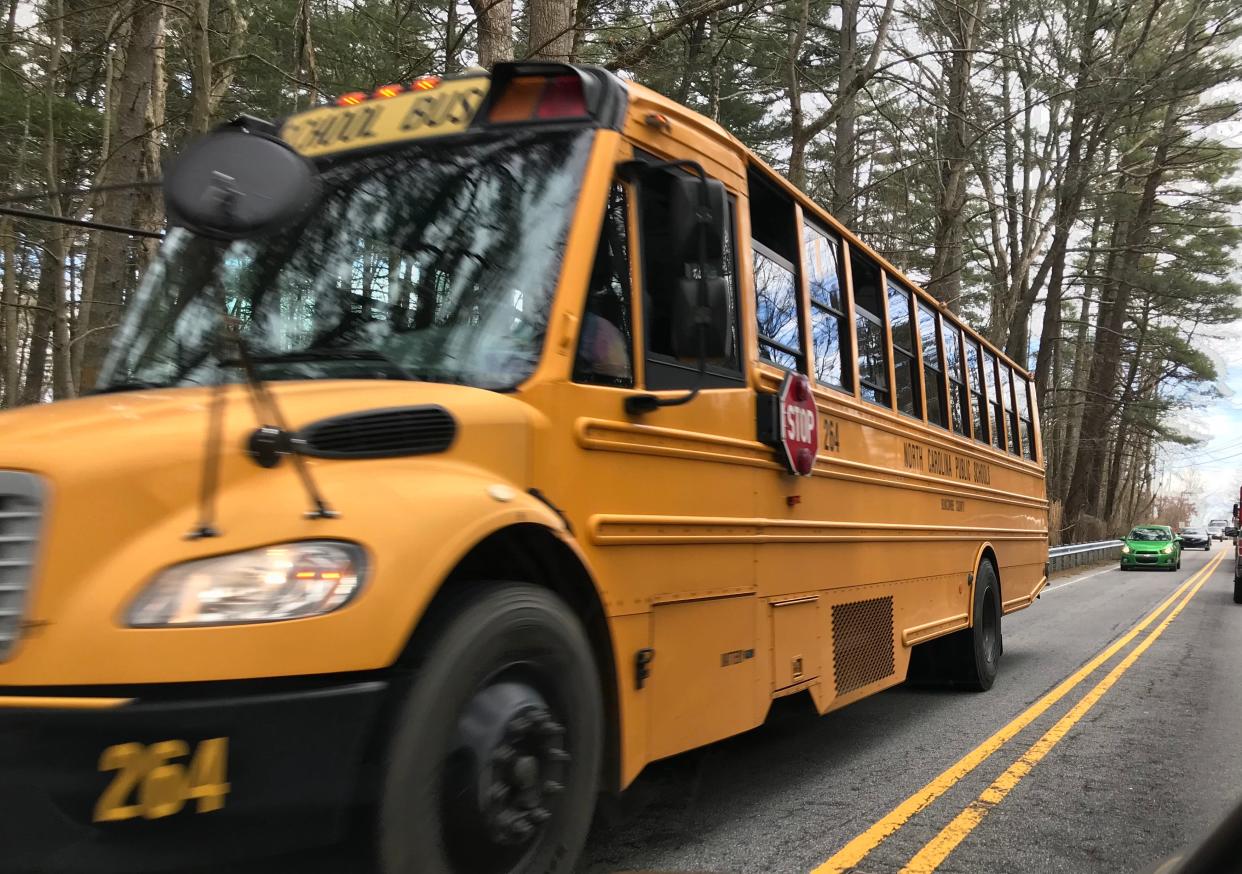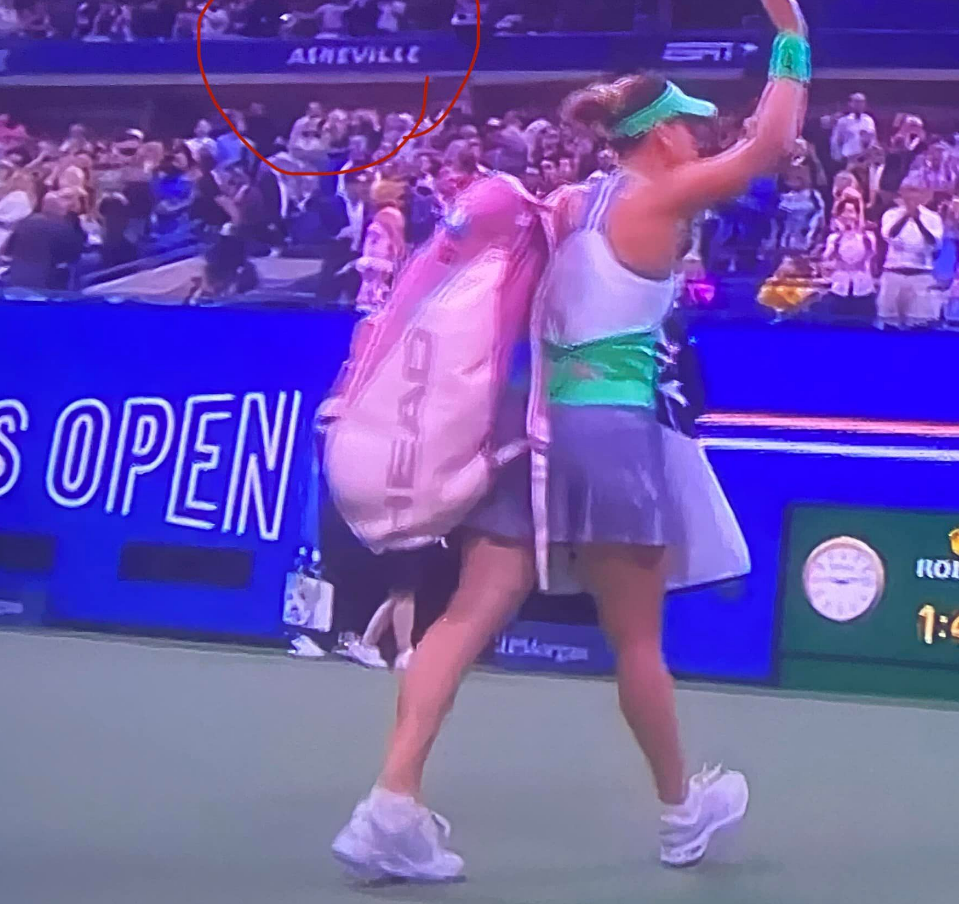Answer Man: Bus riders opt for car rides? U.S. Open tennis sponsorship?

Today’s batch of burning questions, my smart-aleck answers and the real deal:
Question: By observation, there are two signs that fall is just around the corner. First, birds begin to flock up in preparation for their migration south. Second, automobiles twice a day flock up in front of Asheville City Schools and Buncombe County Public schools, as well as some of the private schools as parents chauffeur their children to and from school. These flocks of automobiles block the roadways for through traffic and create their own versions of dysfunction junction. I grew up and worked in a part of the world where both in the past and in the present most students rode the school bus. It seems that an incredibly large number of students in our area who could ride the bus take the chauffeur route. Why is that? Are the schools doing anything to encourage more students to ride the school bus? And what are school administrators and the Asheville City police and Buncombe county Police doing to keep the roadways from being blocked? Based on my experience today it doesn't seem like much has changed. My guess is that drivers are using this time to catch up on their email on their smartphones. There has got to be a smarter idea to deal with this problem.
My answer: Speaking from personal experience, as someone who was one of the last pickups on the bus and had to ride 30 minutes with one butt cheek hanging off the edge of the seat, I can tell you riding the bus isn't all it's, ahem, cracked up to be.
Previously: Asheville students go back to school amid staffing shortages; 6 teacher vacancies remain
Read this: What's going on with Asheville, Buncombe school bus driver shortages?
Real answer: In all seriousness, from personal experience as a father of two sons who went to public school, and in talking to other parents over the years, I can confidently cite several reasons parents drive their kids to school:
Long rides — For a couple of years, my kids would be the first pickup in the morning and last in the afternoon, turning what should have been a five-minute or 15-minute ride into 45 minutes. It got kind of ridiculous, and as I could drive them myself easily, or they could ride with a neighbor, we made that choice.
Behavior on buses — This varies, of course, but it can be a real problem for some kids. Unfortunately, bullying occurs, or just inappropriate comments from older kids. One son came home from the first day of middle school asking what a specific type of sexual toy was, something he'd learned from an older kid.
Safety concerns — While bus riding generally is safe, they still don't have seatbelts, which seems kind of crazy to some parents.
Surely, parents will voice other concerns, but those are a few that come to mind.
Having said all that, bus ridership is actually up.
"Bus ridership is a parental choice, and we cannot speak for our families, however, we can tell you our ridership is higher than it’s ever been!" Dillon Huffman, spokesperson for Asheville City Schools, said via email. "We are planning to transport 1,409 students in the morning and 1,673 students in the evening across our district (this school year)."
That means about 40% of ACS students ride the bus, Huffman noted.
At Buncombe County Schools, spokesperson Stacia Harris also said they can't speak to parents' reasons for their children to ride or not ride the bus.
"We can tell you that our transportation department works diligently to get our students safely to and from school," Harris said. "We maintain a fleet of over 200 buses that travel almost 16,000 miles each day carrying approximately 10,000 students."
Harris said parents are welcome to reach out to their school administration to be added to a bus route.
"Additionally, we are always looking for school bus drivers," Harris added.
You can find those openings at buncombeschools.org/careers

Question: Several of you good readers have asked about "Asheville" showing up as a sponsor of the U.S. Open tennis tournament this year. Here's one of the questions I got: "I was watching the U.S. Open tennis tournament Sunday, and while the camera panned around the stadium I saw major company names advertising, like Chase, J.P. Morgan, Cadillac, and Emirates. Then, right amongst them, I see the logo for Asheville. Needless to say, I was quite surprised and can only imagine how much this advertisement cost. It looked totally out if place. I understand the Buncombe County Tourism Development Authority must spend their money somehow, somewhere, but it's hard to take knowing the cost of housing and living here. The question, I guess, is why would the TDA put so much of the budget into one type of advertisement like this?"
My answer: Personally, I just can't wait for all these avid tennis players to show up in Asheville, only to realize all the tennis courts have been commandeered by pickleball players.
Real answer: As it turns out, my colleague Joel Burgess wrote an excellent story on this topic Aug. 31. The story notes that the U.S. Open is one of the four Grand Slam events in tennis, and this year's tournament has drawn unusually high interest because of the impending retirement of groundbreaking American player Serena Williams.
The TDA did spend $1.3 million on the buy.
TDA: TDA invests $5.9M more in Woodfin 'Wave' project, $750k in Enka Rec Park
Related: What did Buncombe County Schools employees earn in 2021? Why some say they need more
"Explore Asheville is proud to elevate our relationship with the U.S. Tennis Association and Asheville’s reputation as a creative, vibrant community for leisure travel, business groups and sports events,” TDA President and CEO Vic Isley said in that article.
The $1.3 million one-year deal, she said, was "in line with other national media buys such as Facebook" and was 16% over what the TDA said was direct spending attributed to the Billie Jean Cup, the tournament held in Asheville in April.
More: Buncombe TDA passes $30.6M operating budget, awaits state tweak to distribution formula
Burgess also noted that recent state legislation adjusted the amount of the TDA budget that must go directly to advertising, reducing it from 75% to 66%. The remainder goes to projects meant to increase tourism, but can also have public benefits, such as greenways and sports fields.
The TDA derives its revenues from an occupancy tax on hotel stays, vacation rentals, and bed and breakfast stays.
Isley noted that the U.S. Open will generate more than 100 hours of live television coverage in the U.S., Canada, United Kingdom and throughout the world. Additionally, the event will draw 700,000 fans in two weeks at the USTA Billie Jean King National Tennis Center, and an average of seven hours spent on-site for attendees.
In short, that's a lot of eyeballs being exposed to Asheville.
This is the opinion of John Boyle. To submit a question, contact him at 232-5847 or jboyle@citizen-times.com
This article originally appeared on Asheville Citizen Times: Answer Man: Bus riders opt for car rides? U.S. Open tennis sponsorship?

